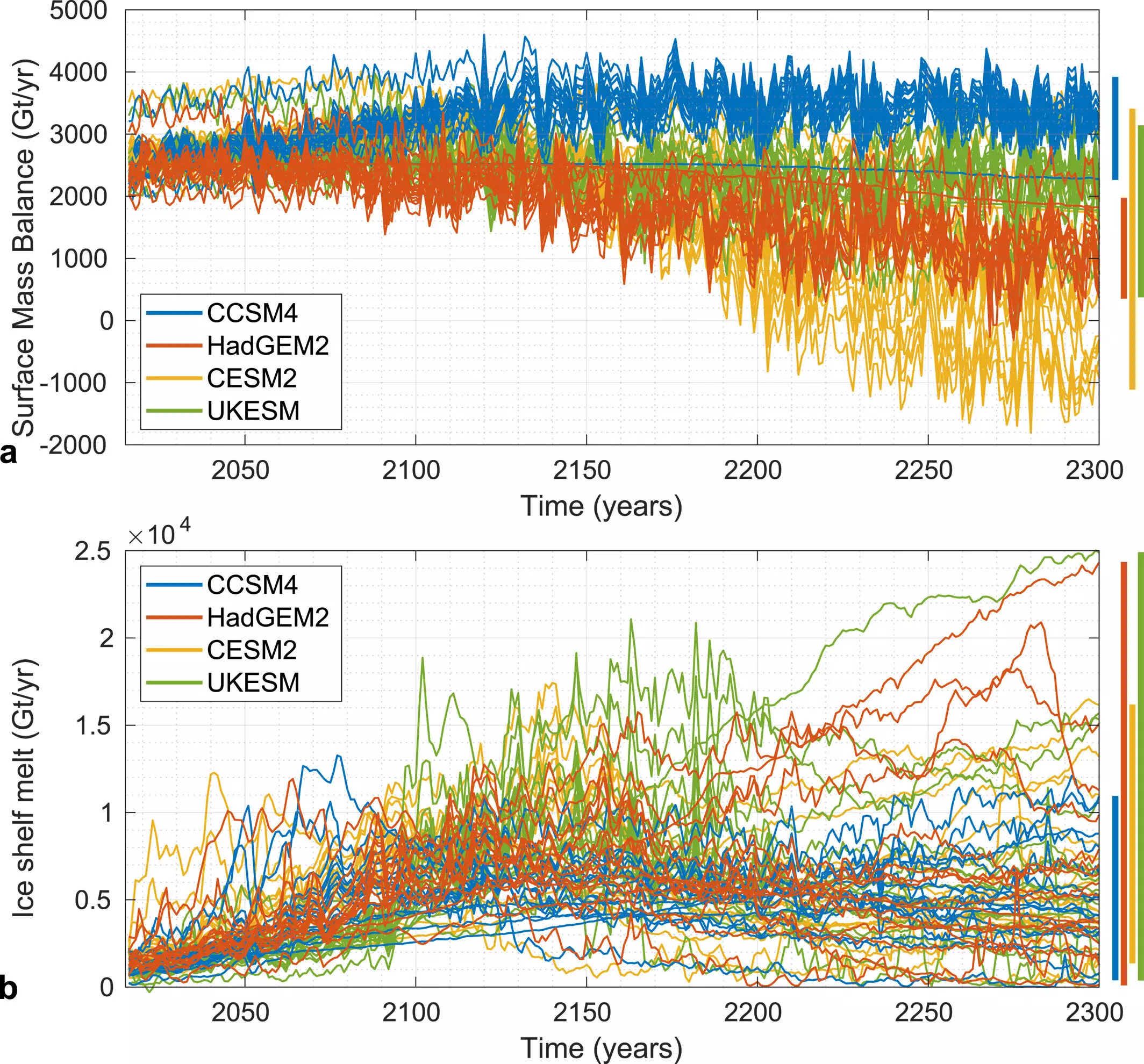Recent findings from a comprehensive study led by Dartmouth College highlight the critical implications of carbon emissions on the Antarctic ice sheet. Engaging over 50 climate scientists worldwide, this investigation delivers the first clear projections regarding the potential impacts of continued carbon emissions over the next three centuries. The team’s findings, published in the journal Earth’s Future, emphasize an alarming trajectory for the ice sheets, especially after the year 2100. This article critically analyzes the study’s findings, significance, and the urgent need for action to mitigate climate change.
The study reveals a sobering truth: while current models show a gradual increase in ice loss throughout the 21st century, their reliability diminishes significantly as we approach the 22nd century. Researchers utilized data from 16 different ice-sheet models to create a more comprehensive understanding of possible future scenarios, ultimately agreeing on the increases in ice loss. However, a concerning plunge into uncertainty follows 2100, where most of Antarctica’s western basins could see a dramatic retreat in ice. By the year 2200, projections indicate that this melting may lead to an unsettling rise in global sea levels—potentially by over 5.5 feet—signifying extensive ramifications for coastal communities worldwide.
Insights from Key Researchers
Dr. Hélène Seroussi, an associate professor at Dartmouth and the study’s lead author, underscores a critical component of this research: the scarcity of long-term projections when discussing sea-level rise. Policymakers, as noted, often concentrate on the immediate impacts of climate change focusing primarily on outcomes up to 2100. Yet, the results of this study furnish vital insights regarding the extended period beyond this date, highlighting an alarming acceleration in ice loss. The agreement among the models regarding the “amplified” long-term impacts reinforces the necessity of adopting proactive measures against climate change.
The study also delves into the contrasting consequences of high versus low carbon emissions. Although current emissions may yield only modest effects on models for this century, an exponential increase in sea-level rise risks becomes evident post-2100. Co-author Mathieu Morlighem, a professor of earth sciences, effectively communicates the urgency in minimizing carbon emissions. The results decisively illustrate that the decisions taken in the present will have profound implications for generations to come, thereby reinforcing the critical need for immediate action.
Importantly, the timing for the onset of glacier retreat varies based on the particular models utilized. However, what emerges as a consensus across all models is the inevitability and irreversibility of ice loss once rapid melting commences. Seroussi draws attention to how specific basins in West Antarctica might undergo complete collapse before the century’s end, pointing to an urgent call for immediate climate action. The unpredictability inherent to the timing of such collapses is directly tied to future greenhouse gas emissions, positioning reduction efforts as paramount to delaying catastrophic outcomes.
A Path Forward: Collaboration and Continued Research
Moving forward, the research paves the way for further collaborative modeling efforts amongst the scientific community. By focusing on regions with significant uncertainties, such as Greenland, scientists can develop a more precise understanding of potential outcomes. Leveraging collective knowledge and computational resources will be crucial to identifying the scenarios that pose the gravest threats and require immediate attention. As Seroussi emphasizes, learning from the global scientific community is essential for developing strategies to combat these looming challenges.
The Dartmouth-led study serves as a harrowing reminder of the intricate and often alarming relationship between carbon emissions and the stability of the Antarctic ice sheet. With projections indicating significant ice loss and a notable rise in sea levels beyond 2100, the urgency to adapt our environmental policies and practices has never been greater. As findings from this research circulate in both scientific and policy-making circles, they illuminate a call to action, imploring stakeholders to prioritize addressing carbon emissions in order to safeguard the planet’s future and preserve our vulnerable coastlines.


Leave a Reply